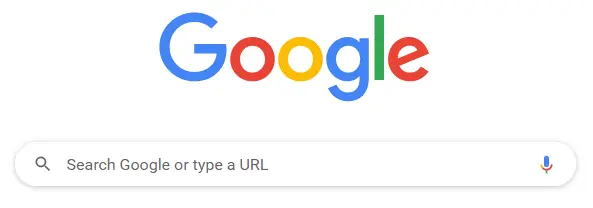Social Media has taken off but many marketing executives are still scratching their head or wonder if it’s just a fad that will eventually wane. Others are fully involved and are harvesting the many networks’ rewards (ask Boeing, Dell, Sony, The New York Times, Starbucks, Ford, T Mobile, Athenahealth, Procter & Gamble, etc.).
Here’s why: as Nielsen put it two full years ago, “today nearly 4 in 5 active internet users visit social networks and blogs”.
In this series, we will introduce you to social media concepts, tools and stories. We will also follow the industry and update you on its latest developments, success stories and failures from which we can all learn. The first issue will go over social media basics and tips you can easily implement.
- Question: Is social media relevant to my business?
- Answer: If you are in business and you want to connect to your prospects and customers, then social media is relevant to your business. Think of it as an additional inbound marketing venue.
You have considered using social media for your business, but are unsure about what it requires, how to set it up and how to manage it. You may even have a personal Facebook page and now need to create your business Facebook page. There are many resources out there to help you set them up, but we may wish to consider a few important aspects of Social Media requirements before dedicating the time to set up your company’s social media tools.
The Right Tool for the Right Job
First of all, which social networks are right for your business? Facebook? Twitter? YouTube? Pinterest? Vine? Instagram? LinkedIn? Flickr? Tumblr? Etc. (…and there are MANY more). Arguably, all of the above are useful in their own way, but most certainly Facebook and Twitter have to make it into your short list.
According to a study by Pew Research Centre:
- 67% of U.S. Internet browsers use Facebook
- 72% of U.S. women Internet users are on Facebook
- 73% of U.S. Internet users between the ages of 30-49 use Facebook
- 68% of U.S. Internet users who have graduated from college use Facebook
Why Facebook? Here’s why: every other American has a Facebook account, so your customers have a 1 in 2 chance of being a member, this also applies to businesses that only sell products and services locally. Once they find you (inbound marketing) and “like” or select you, your Facebook posts will appear on their own news feed, and they can recommend your posts to their own network. Facebook is like word-of-mouth on steroids and it’s easy to set up. Typically, you will gain far more followers on Twitter than you will on Facebook. You will invite followers on Facebook from your list of friends, initially. However, when your friends share your worthy posts, they will appear on your friends’ followers’ streams.
You also should invite your website visitors to like your Facebook page, share your website page on their own Facebook page, include links to your social media accounts in your email signature, and feature your social media sites on all your corporate communications, including advertising and PR content.
- 42% of small businesses owners found ¼ of their customers through social media
- 38% of small business owners dedicate ¼ of their business networking time to online channels
- 24% dedicate ½ their time to online channels (Source: Manta survey)
Facebook page setup
You must have a personal Facebook page to set up your business page.
To create a Page, log into a desktop computer and follow these directions:
- Click Create a Page from the More section at the bottom right of your homepage
- Choose a Page category
- Choose a subcategory and enter the required information
- Check the box next to I agree to Facebook Pages Terms and click Get Started
Be sure to include a cover photo: a crisp 851 px by 315 px picture, under 100 KB, at 72 dpi. If you need help, email us at info@workingarts.com and we’ll help you with the setup.
Why Twitter? Twitter is a direct engagement platform that lets you send small texts (limited to 140 characters, including spaces) and is often used with links to richer content (photos, videos, web pages, articles, etc.). Growing a list on twitter is done much faster than on Facebook, as many people “follow” you back when you follow them. Of course, your tweets must be of interest to them, which is why you want to use that channel to establish yourself as an expert in your field without EVER MAKING A HARD SALE on twitter. Your corporate twitter account can be used for many things, including a quick way to send you a private message (Direct Message or DM) or a tweet that everyone can see, simply by including your twitter address within the message (e.g. “@working_arts”).
- US population on the internet: 2002: 57% – > 2012: 85%
- US population on social networks: 2009: 46% – > 2012: 69%
Source: Pew Research
Building followers
Great! So now I have a Facebook account and a twitter account. What now?
Rule#1: twitter is not a broadcast channel. You can use it to share information; for example, you can include links to articles that fascinate you (if the link is too long, shorten it with “bit.ly” at https://bitly.com/ or tiny.url ). Twitter is also a very good research tool and, when you find a nugget you like, you can then share it with your followers, further positioning your twitter account as a resource worth following. Twitter hashtags (e.g. “#digitalliteracy”) can let you follow conversations related to the topic of digital literacy and events or announcements related to that topic. You can find like-minded people’s accounts that way, as well as use the name of your city to find local twitter users. Advanced Twitter users join “Tweet Chats” using specific hashtags, wherein the conversation follows a specific idea or moderated conversation.
Rule#2: Be yourself! Twitter has a way to reveal inauthenticity. Twitter is used to make connections, not sales (at least not right away: would you sell something to someone the moment you meet them outside of a business context? No, you would first establish a connection… see where I am going with this?). You will meet followers and you will make connections if you spend time on twitter. How much time? Initially, you may wish to listen a lot. Dedicate a couple of hours a week to learn your way around the tool and start posting when it makes sense.
Retweeting? Yeah, that’s a cute name for sharing a post you think worthy of your audience. It’s a good way to engage as well. Try it out, it’s easy and fun. In twitterspeak, it’s called RT.
The virtual and the real worlds are increasingly conjoined and will eventually merge in the same way telephones have become integral to our daily life. You will learn about and meet interesting people, you will develop friendships. You will invite people you have met on twitter, to join you on your personal facebook page so you can deepen your ties. Enjoy!
Twitter account set up is EZ!
Go to twitter.com, sign up. Find a name that works (twitter will help you), a good password (with upper case, lower case, symbols, letters and number, etc., select a headshot or a logo that works in a square format, select a larger picture for your header (1252px x 626 px, up to 5MB file size), enter your website, your location, a Bio (mission statement). For the background, you may wish to design a company specific background. It’s best not to use one of the canned themes, as they indicate newbie and usually personal, not business. The background image file cannot be larger than 2MB. Follow the settings instructions that make sense to you and start tweeting. If you need help, email us at info@workingarts.com and we’ll help you, with the setup.
Some perspective, from social weaver Larissa Hayden (@rissahey)
“Keep it real…and in perspective. 1/5 of Twitter accounts are dead; half of Twitter users did not tweet this week, and only 5% have more than 100 followers. So pressure. Really.”
Also… here are a few recent numbers for you to ponder:
- Facebook: 1.2 B users
- Twitter: 288 M monthly active users (Twitter acquired vine in October 2012 and launched in January 2013)
- Instagram: 100 M users (Facebook acquired Instagram in July 2013)
- tumblr: 125 M users (Yahoo acquired tumblr in June 2013)




